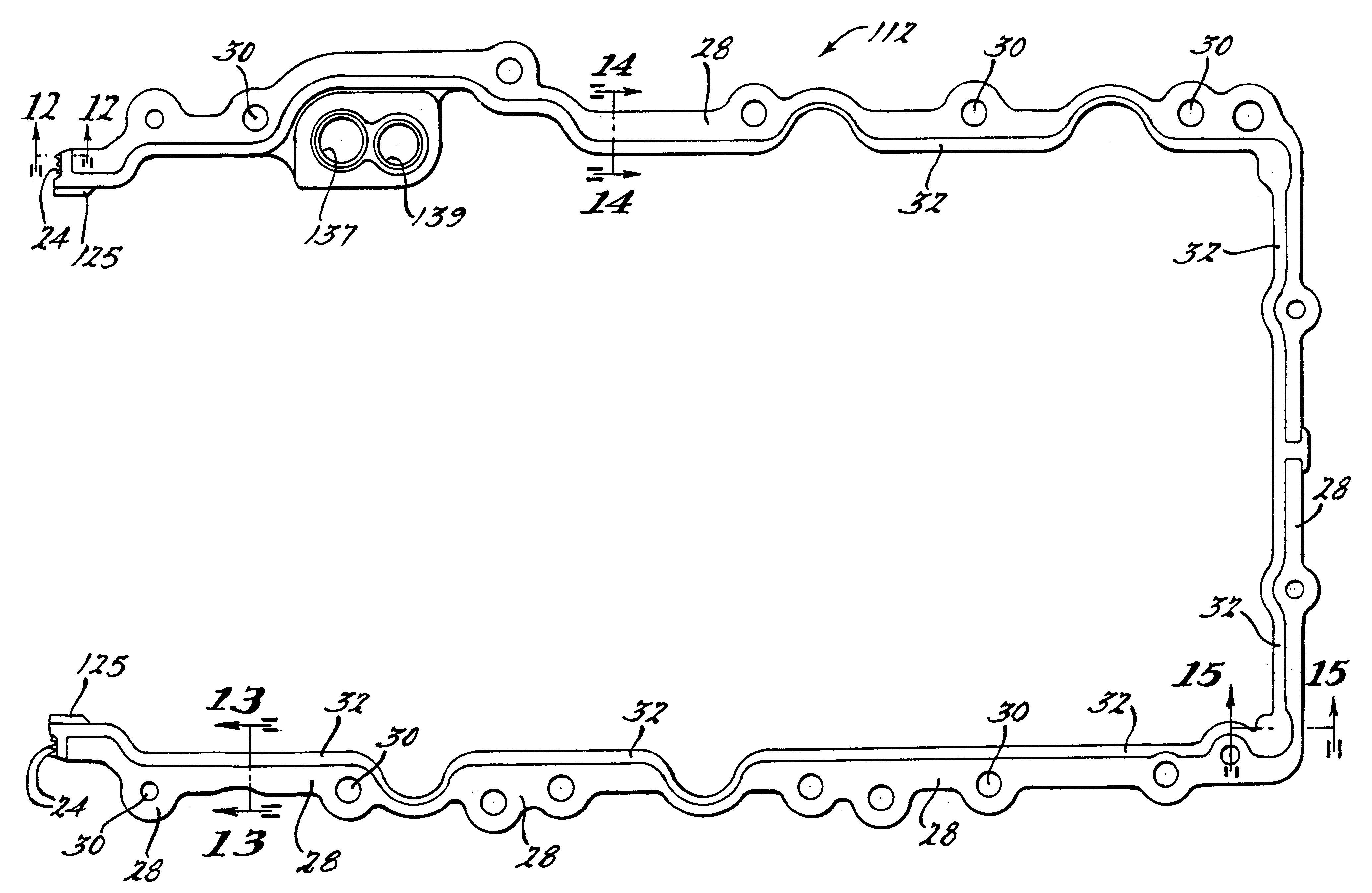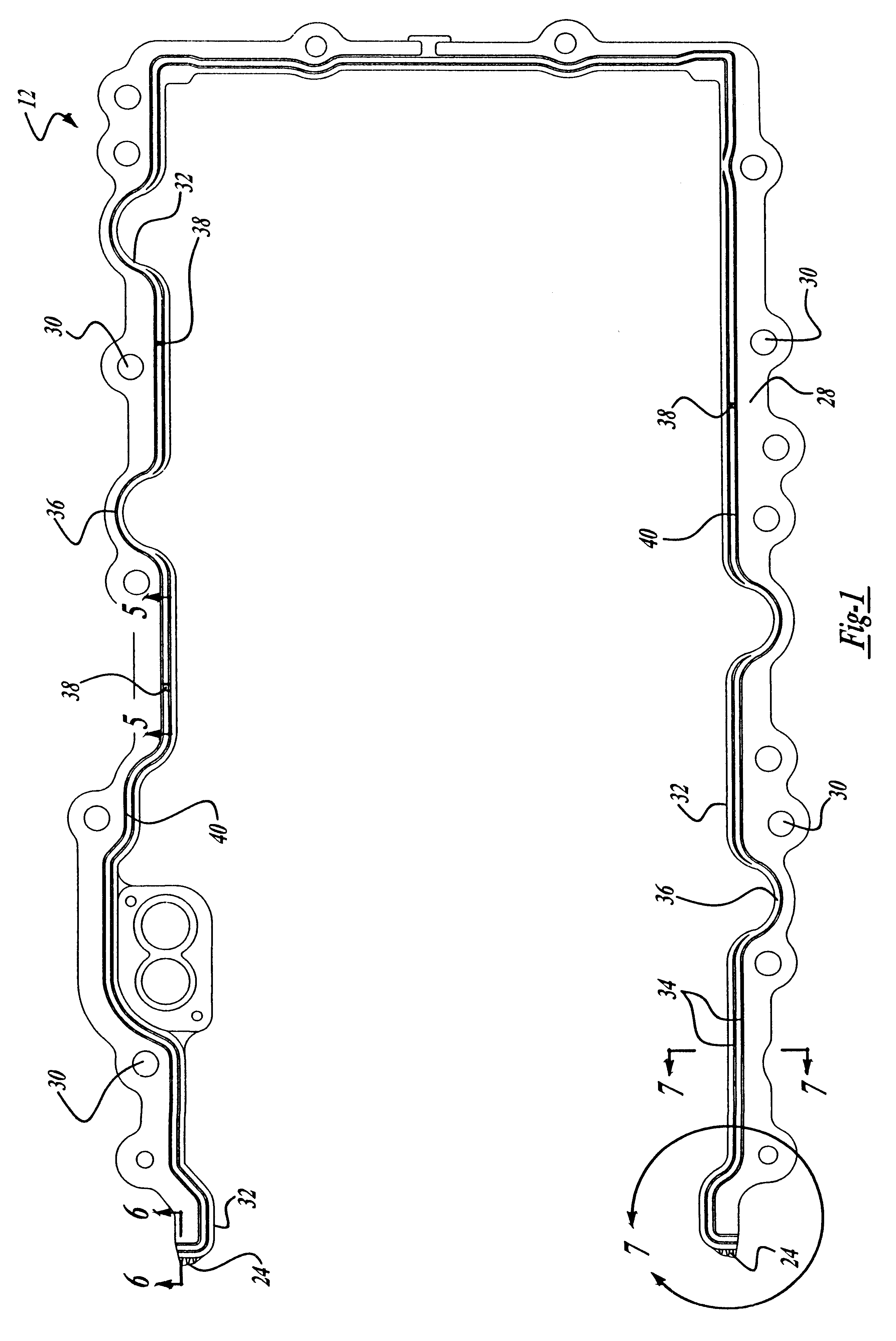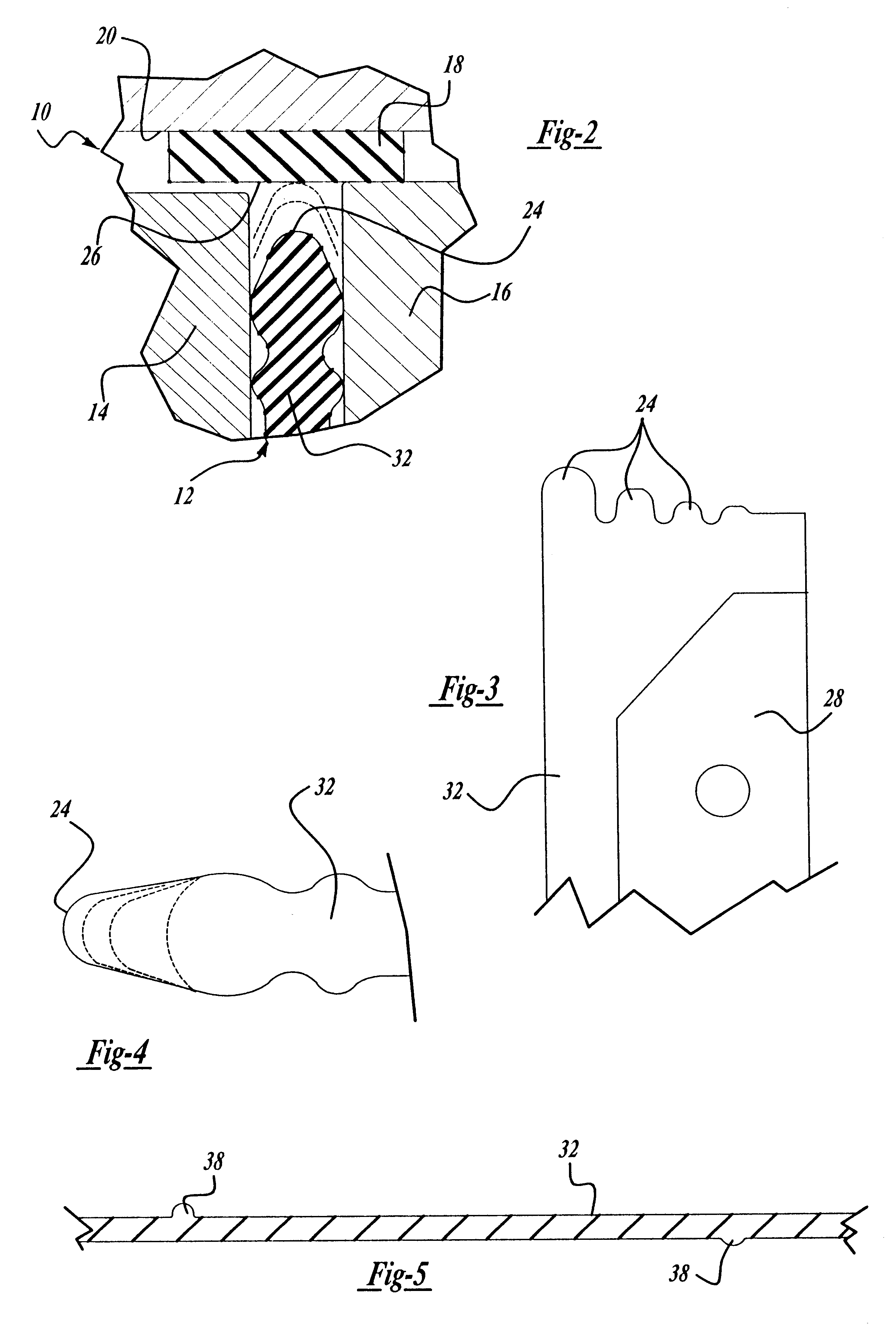T-joint gasket assembly
a gasket and joint technology, applied in the direction of engine sealing, lubrication elements, sealing arrangements, etc., can solve the problems of high cost and application, poor sealing effect, and high cost of prior art sealing and caulking mediums such as rtv sealant,
- Summary
- Abstract
- Description
- Claims
- Application Information
AI Technical Summary
Benefits of technology
Problems solved by technology
Method used
Image
Examples
Embodiment Construction
Referring to one preferred embodiment in FIGS. 1-8 of the drawings, a gasket assembly 10 for use in a T-joint or multiple joint sealing interface is shown. The gasket assembly 10 (see FIGS. 1 and 2) includes a first gasket 12 which generally has a U-shaped design. However, it should be noted that other shapes can be used depending on the need and the multiple joint interface to be sealed. The first gasket 12 is used to seal between a first 14 and second sealing surface 16. The first 14 and second sealing surface 16 can be the oil pan and engine block, but may be other components found in an automotive engine (or other machines or products). The first gasket 12 interacts and mates with a second gasket 18 to form a gasket assembly 10. The second gasket 18 is placed between a third sealing surface 20 such as a front cover and the above mentioned engine block and oil pan. A three surface interface such as described above, that requires sealing, have also been known as T-joints. A proper...
PUM
 Login to View More
Login to View More Abstract
Description
Claims
Application Information
 Login to View More
Login to View More - R&D
- Intellectual Property
- Life Sciences
- Materials
- Tech Scout
- Unparalleled Data Quality
- Higher Quality Content
- 60% Fewer Hallucinations
Browse by: Latest US Patents, China's latest patents, Technical Efficacy Thesaurus, Application Domain, Technology Topic, Popular Technical Reports.
© 2025 PatSnap. All rights reserved.Legal|Privacy policy|Modern Slavery Act Transparency Statement|Sitemap|About US| Contact US: help@patsnap.com



